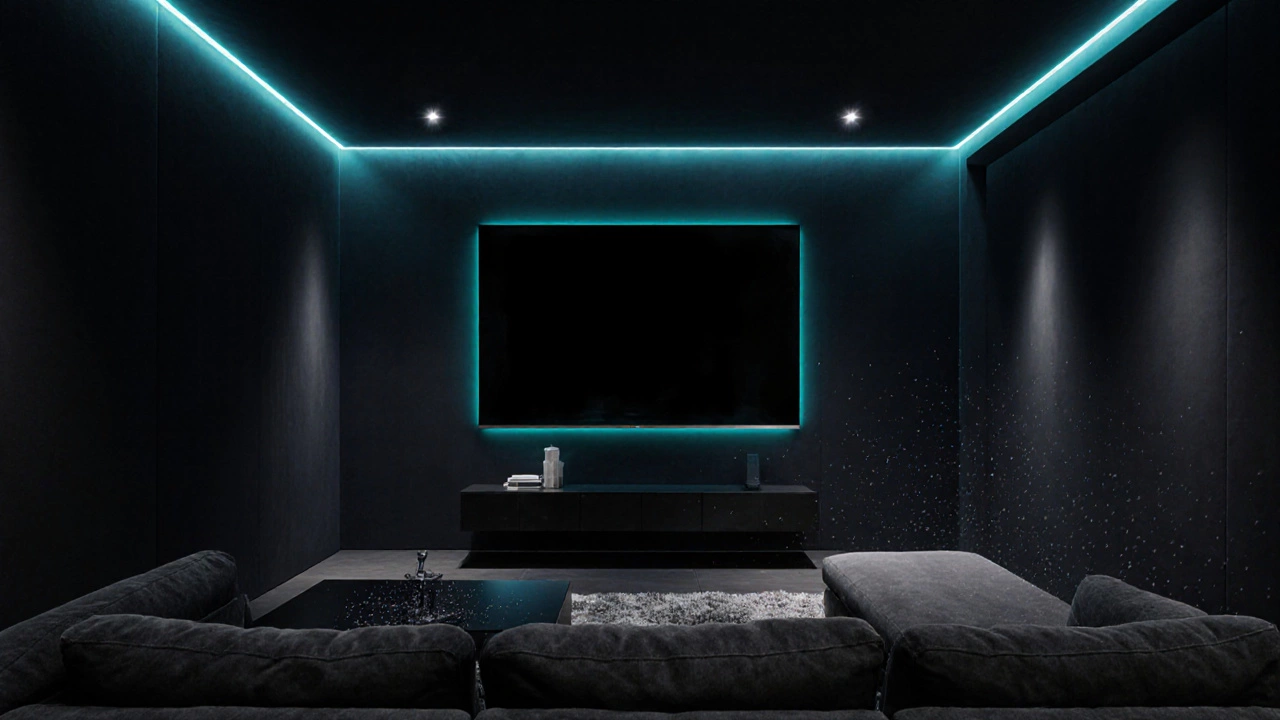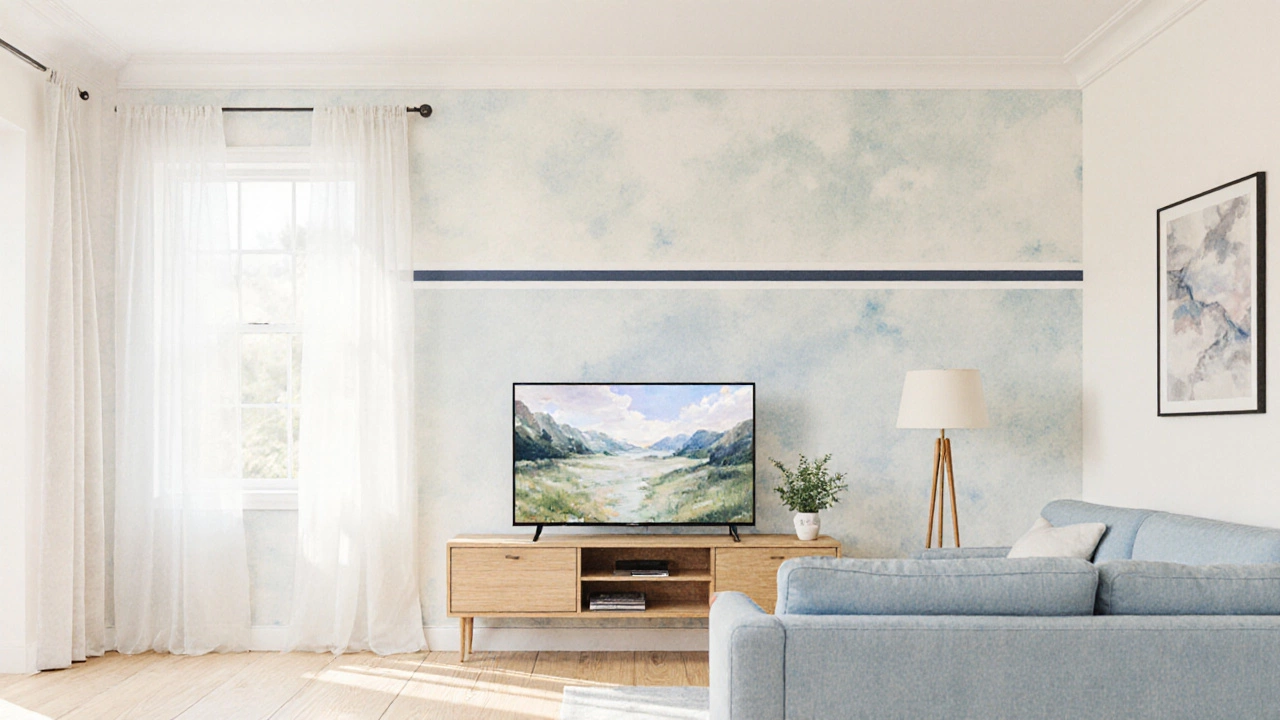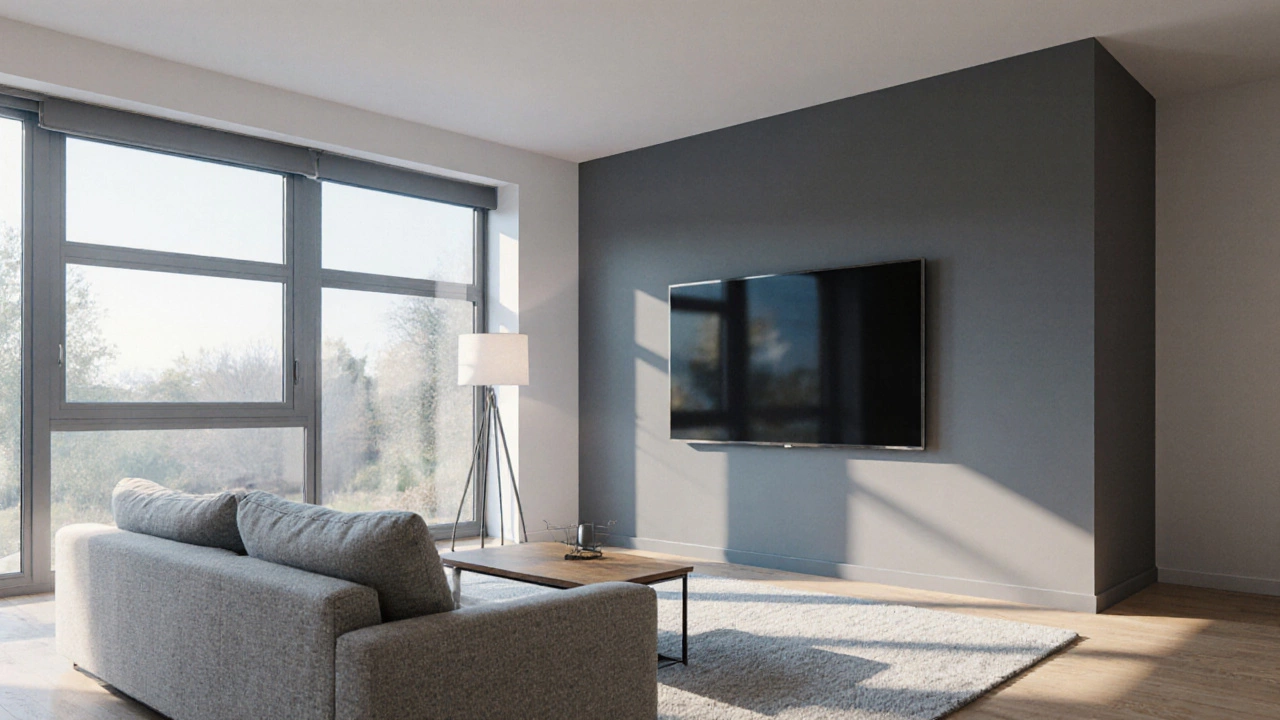TV Wall Color Advisor
Select your room conditions to get a personalized recommendation for the best TV wall color.
Recommended Wall Color
Based on your selections, we recommend TV wall color.
Recommended for your setup
- Glare Control
- Room Perception
- Style Match
Implementation Tips
Choosing the right hue for the wall that houses your television can feel like a trivial decision, but it actually shapes how you watch movies, binge‑watch series, and even how the room feels. A TV wall color influences glare, depth perception, mood, and how well your décor elements play together. Below we break down the pros and cons of dark and light TV walls, walk through a step‑by‑step design process, and give you a handy checklist so you can decide with confidence.
What Is a TV Wall, Anyway?
TV wall is the vertical surface where a television is mounted or placed on a stand, often acting as the focal point of a living‑room or home‑theater space. It may be a plain drywall, a painted panel, a textured finish, or even a specialty material like wood veneer. While the term sounds simple, the wall interacts with lighting, acoustics, and surrounding furniture, making its color choice a design lever you shouldn’t ignore.
Why Color Matters for Your TV Wall
Three key factors tie color to your viewing experience:
- Glare control: Light walls reflect more ambient light, which can cause reflections on the screen. Dark walls absorb light, reducing glare.
- Perceived depth: Dark surfaces push the visual plane back, giving the TV a floating effect. Light surfaces pull the eye forward, making the TV feel closer.
- Mood setting: Color psychology says blues and greys calm viewers, while whites and beiges energise the space.
Dark TV Wall: When It Shines
Dark walls-think charcoal, navy, or deep greys-are a favorite for dedicated home‑theater rooms. Here’s why they work:
- Reduced reflections: The matte finish of most dark paints absorbs stray light, keeping the picture crisp.
- Enhanced contrast: A dark backdrop makes bright images pop, especially for HDR content.
- Elegant vibe: Dark hues add a cinematic feel, often paired with accent lighting like LED strips.
However, dark walls can make a small room feel cramped if the paint is too saturated. Pairing them with proper ambient lighting and lighter flooring can balance the depth.

Light TV Wall: When It Works Best
Light walls-soft whites, light greys, or pastel tones-fit open‑plan living areas where natural light dominates. Benefits include:
- Bright, airy atmosphere: Light colors reflect sunlight, keeping the room feeling spacious.
- Versatile backdrop: Easier to match with a range of furniture styles, from mid‑century to contemporary.
- Cost‑effective painting: Light paints generally require fewer coats, saving time and money.
On the downside, glossy light paints can cause glare. The solution is to choose a matte or eggshell finish and add curtains or blinds to control daylight.
Side‑by‑Side Comparison
| Aspect | Dark Wall | Light Wall |
|---|---|---|
| Glare handling | Excellent (absorbs light) | Good with matte finish; otherwise moderate |
| Space perception | Can make room feel smaller | Creates an open, airy feel |
| Style vibe | Cinematic, modern, luxe | Fresh, casual, versatile |
| Maintenance | Shows dust and fingerprints | Shows stains less conspicuously |
| Best lighting setup | LED backlighting, dimmable sconces | Natural light, sheer curtains |
Step‑by‑Step Process to Pick the Right Color
Follow this quick workflow to land on a perfect TV wall shade:
- Assess the room’s natural light: Measure window size and direction. Bright rooms favour light walls; dim rooms can handle dark walls.
- Identify your primary viewing activity: Movie nights? Go dark. Casual TV‑catch‑up? Light works well.
- Choose a finish: Matte or eggshell for light walls; flat or satin for dark walls to minimise glare.
- Test paint samples: Paint 12×12 inch squares at eye level on opposite walls. Observe them at different times of day.
- Plan complementary lighting: Add LED strips behind the TV for dark walls, or install dimmable floor lamps for light walls.
- Finalize with décor accents: Pull in throw pillows, artwork, or shelving that echo the chosen hue.

Design Tips to Avoid Common Pitfalls
Even after choosing a color, small details can make or break the look:
- Watch the ceiling: A dark ceiling can accentuate a cramped feeling; keep it neutral or slightly lighter.
- Mind the flooring: Dark walls pair nicely with medium‑tone wood or carpet; light walls look fresh with pale tiles.
- Balance with furniture: If your sofa is dark, a light wall creates contrast; reverse the rule for a harmonious palette.
- Use accent strips: A thin strip of contrasting paint around the TV adds visual interest without overwhelming the space.
Quick Checklist Before You Paint
- Measure window‑to‑TV distance and note light direction.
- Pick a paint finish that matches your glare needs.
- Buy at least three sample shades (dark, medium, light).
- Plan lighting fixtures: LED backlights, sconces, or floor lamps.
- Consider wall texture: smooth plaster works for both, while brick adds character to dark walls.
- Confirm the TV’s bezel colour; a black bezel blends better with dark walls.
Frequently Asked Questions
Will a dark TV wall increase energy consumption?
No. Paint color doesn’t affect the TV’s power draw. However, a dark wall may reduce the need for additional blinds or curtains that block glare, which can indirectly lower lighting costs.
Can I use wallpaper instead of paint?
Absolutely. Choose a matte‑finished wallpaper for dark tones to keep reflections low. For light walls, a subtle pattern can add texture without creating glare.
How do I avoid fingerprints on a dark wall?
Select a paint with low sheen (flat or matte) and use a washable formulation. Keep the TV area tidy and consider a decorative console that shields the wall from direct hand contact.
Is it okay to mix dark and light sections on the same wall?
Yes, a two‑tone wall can create a striking focal point. Paint the upper half light to keep the room airy, and the lower half dark to anchor the TV. Use a clean line or a subtle trim to separate the colors.
What color temperature works best for a TV wall?
Cool greys (blue‑ish) complement most modern TVs, while warm whites pair nicely with wood‑tone furniture. Match the wall’s undertone to the surrounding décor for a cohesive look.
Whether you opt for a sleek charcoal backdrop or a bright, breezy white, the right TV wall color can turn an ordinary setup into a personal cinema. Use the steps, tips, and checklist above, test a few samples, and you’ll end up with a wall that looks great and enhances every viewing session.


Write a comment